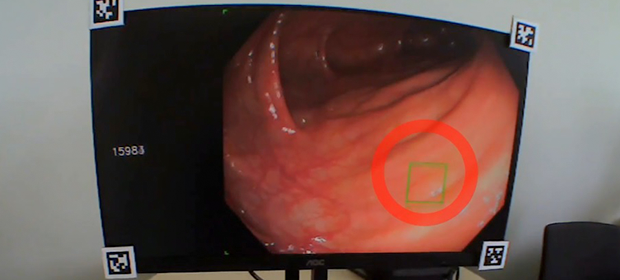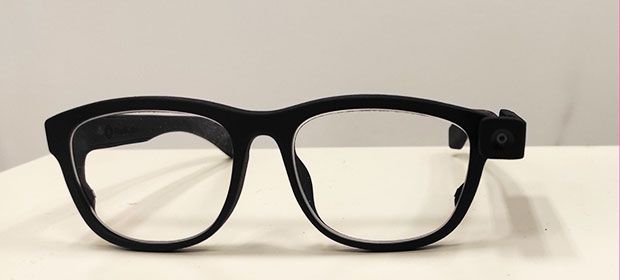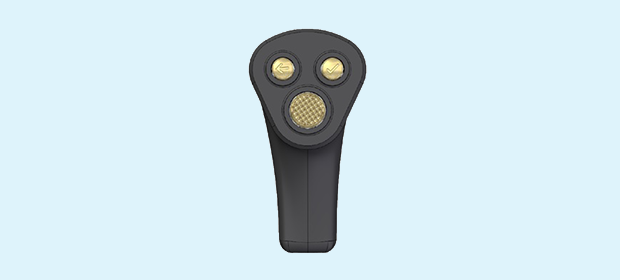Eye Tracking: The influence of AI on the visual gaze pattern

The purpose of computer-aided detection (CADe) systems is to highlight regions such as colorectal polyps. The examiner ultimately decides how the region highlighted by the software should be interpreted. Although CADe systems are associated with an increase in the rate of polyps detected, the exact mechanism for this is still unclear. However, the decisions made by the examiner when analyzing the highlighted regions are a key factor. In this project, we are therefore trying to analyze the changes in the examiner’s visual gaze pattern (VGP) caused by CADe systems.
We use portable eye-tracking glasses in combination with a custom-made user interface that is able to display different video sequences and integrate user interactions. A custom 3D-printed manual control unit incorporating an Arduino Nano processor serves as the human interface device.
In an example of the experimental setup, examiners are asked to press a button as soon as they detect the presence of a polyp in a colonoscopy video. The first detection time and the VGP, among other variables, are tracked and subsequently analyzed.
Aspects of interest include analyzing the way in which CADe systems like this alter the learning curve for young endoscopists, and the way in which multiple false-positive activations by CADe systems affect examiners’ inspection patterns.This experimental setup is expected to lead to a better understanding of the interaction between examiners and CADe devices.
Publication
Troya J. et al. (2022)
The influence of computer-aided polyp detection systems on reaction time for polyp detection and eye gaze.
Endoscopy 2022
Go to publication





